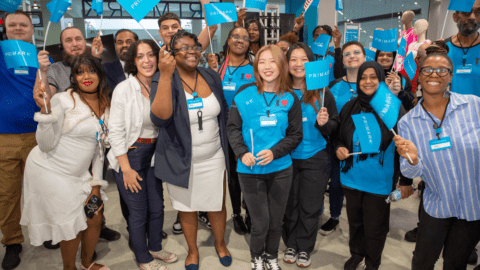Today’s consumers are researching products and potential purchases online, via mobile and tablet devices, and through social recommendations. As a result, retailers are seeking optimal digital marketing methods that will increase engagement and boost conversion rates.
During his keynote presentation at SES New York 2012, Avinash Kaushik, Digital Evangelist for Google, revealed how organizations can tap analytics to measure the success of multichannel initiatives. The event took place March 19-23 in New York City.
Among the top 50 e-Commerce sites, there is an average 2% conversion rate from what, Kaushik reported. This has companies leaving 98% of an active audience untapped. “If you only optimize for the 2%, you’re missing out on an enormous amount of opportunities,” he stated.
Advertisement
An optimal customer experience is formulated by the intersection of influence, experience and value, Kaushik explained. However, before companies can reach optimal engagement, they first must analyze and understand their current marketing performance.
Kaushik recommended that organizations integrate data into creative visualizations, such as color-coordinated charts, rather than countless rows of information. As a result, marketers will have a better understanding of which channels influence behavior and where most conversions take place. “Don’t become a data puker — be smart about how you look at web analytics,” Kaushik said.
With a clear understanding of which channels are driving higher levels of engagement, marketers can prioritize investments and determine which initiatives need revisiting and revisions in terms of messaging and content development.
Moving From “Shout Marketing” To One-On-One Communication
The marketing world is transitioning from “shouting methods” to more intimate, one-on-one communication. Organizations must adapt and implement this quickly, Kaushik explained, because eventually, social interaction will be a primary means of marketing.
However, poor reporting is hindering companies’ potential social success. Rather than focusing on number of “Likes” and Twitter followers, retailers must analyze which content receives the greatest engagement then create similar content, Kaushik recommended.
Kaushik provided three points marketers must consider to create more effective interactions via Facebook, Twitter and LinkedIn:
· So what? Determine the economic value of each social visit, as well as the direct and indirect impact of messaging, offers and overall content;
· Where? Pinpoint where people are sharing brand content and, most importantly, from where key social traffic is derived. Then marketers can determine on which social sites to focus most engagement efforts; and
· Why? By determining the content to which consumers respond most, brands can implement a consistent and effective messaging strategy.
During his presentation, Kaushik announced the release of new Social Reports tools within Google Analytics. The new tools were developed to help marketers identify traffic from social sites, measure overall lead-to-conversions and determine the efficacy of interactions. Organizations can access a mini-dashboard that contains data from all social reports. They also can access a Social Value visualization, designed to help them determine how social sites contribute to web site conversions and the overall sales funnel.








